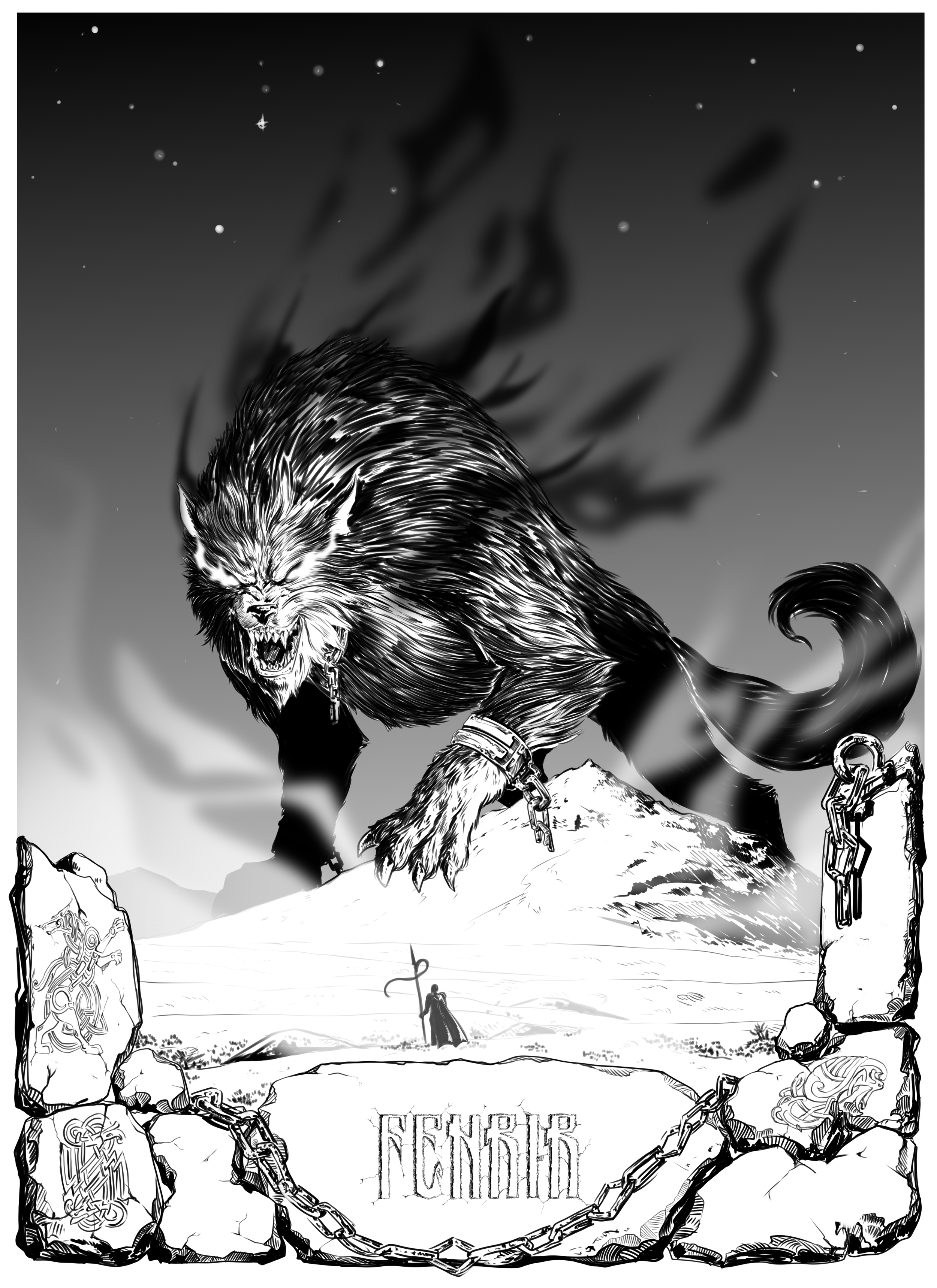Fenrir
Fenrir, the colossal wolf of Norse mythology, is a figure wrapped in the gravity of doom and predestined conflict. Born to Loki and the giantess Angrboda, Fenrir is among the most formidable progeny of the Jotnar, destined to play a pivotal role in the cosmos's downfall. From his early days, the gods harbored deep-seated fears about Fenrir's growing strength and the ominous prophecies surrounding him. In a blend of fear and precaution, the Aesir decided to bind him, a decision that would sow the seeds of betrayal and wrath. They used the magical chain Gleipnir, crafted from the sound of a cat's footsteps, the beard of a woman, the roots of a mountain, the sinews of a bear, the breath of a fish, and the spittle of a bird—elements so ethereal that they did not exist in a conventional sense.
The deception involved in Fenrir's binding, under the guise of a test of strength, and his subsequent realization of entrapment mark a crucial betrayal that shapes his fate and ferocity. His catastrophic release during Ragnarok, leading to the fatal encounter where he devours Odin, fulfills the dark destiny foretold by the ancient seers.
Visual Description: Fenrir is envisioned as a gargantuan wolf, his fur a shadowy amalgam of black and the darkest greys, mirroring the twilight of the gods he is destined to bring about. His eyes, burning with a fiery crimson, reflect the depth of his rage and the pain of his betrayal. Each strand of his fur seems to ripple with a latent power, as if the very forces of chaos and destruction course through him.
The chains of Gleipnir, though broken, hang from his massive form, serving as stark reminders of the gods' treachery. These remnants are depicted with ethereal, almost ghostly qualities, highlighting their magical origins. Fenrir's posture is one of unleashed fury and formidable readiness, often portrayed in mid-howl or roar, his powerful jaws open as if to swallow the heavens themselves.
Artistically, Fenrir is often placed within a tumultuous landscape that foreshadows Ragnarok, surrounded by the chaotic elements of a world in disarray—fire, storm, and crumbling structures. This backdrop serves to enhance his role as a harbinger of the end times, his presence an embodiment of the inevitable cycle of creation and destruction in Norse cosmology.
